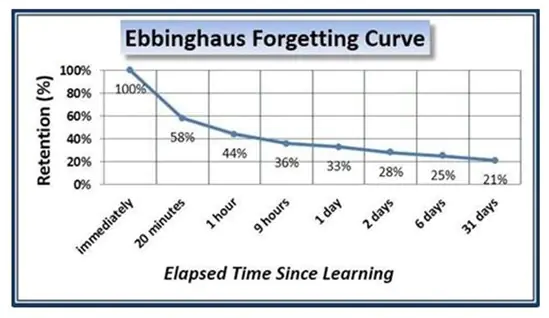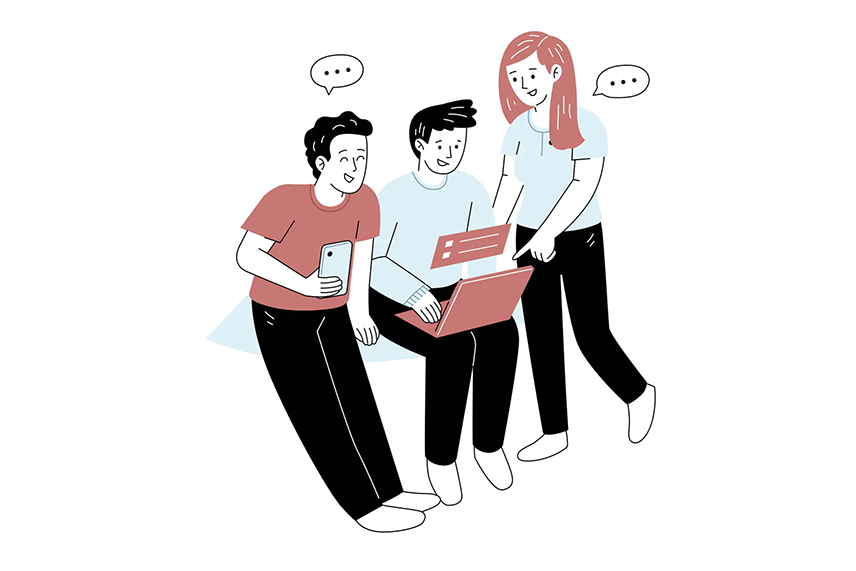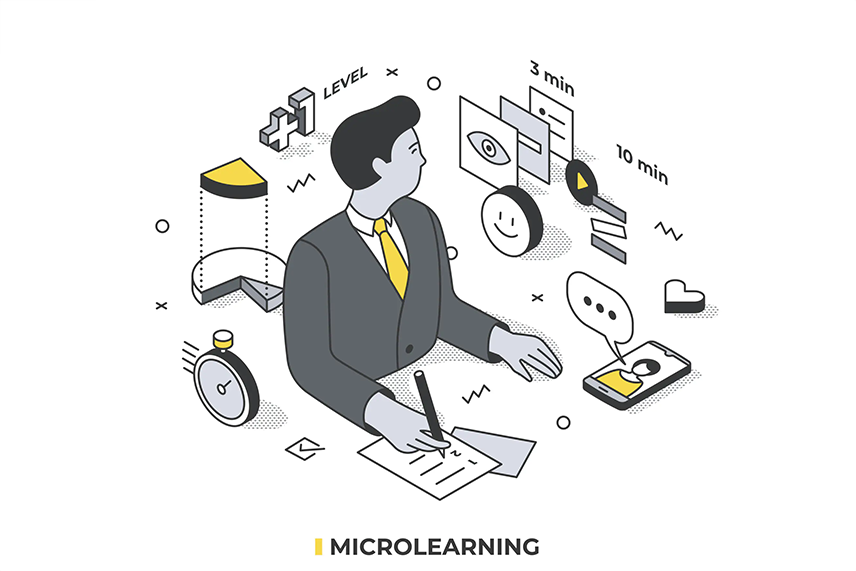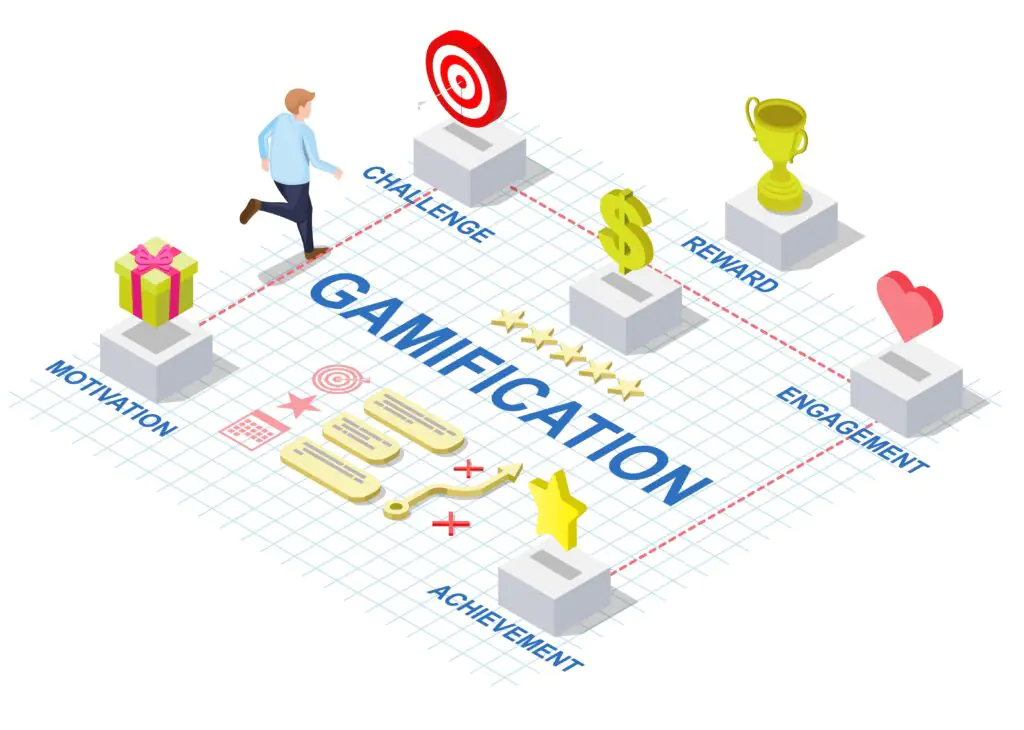
Knowledge retention through continuous nudge-learning has become increasingly important to reinforce learning in today’s rapidly changing world. In the past, learning was often seen as a one-time event, such as obtaining a degree or completing a training program. However, in today’s knowledge economy, it is essential for individuals to continuously learn and adapt to acquire new skills that help them stay competitive and relevant in the workforce.
The effectiveness of traditional and modern learning methodologies is constantly being challenged, with research showing that about 75% of the knowledge is lost within six days of learning, if not applied. In this scenario, the concept of nudge-learning has gained popularity, as it helps reinforce learning and retain knowledge.

Nudge-learning has its roots in the field of behavioral economics which explores how individuals make decisions and the factors that influence those decisions. It was further developed by the work of Richard Thaler and Cass Sunstein who proposed that by making small changes to the environment, such as the design of a menu or the placement of healthy food options in a cafeteria, individuals could be nudged toward making better choices. It uses gentle and indirect suggestions or cues to influence behavior, rather than force or coercion.
“The term ‘nudge’ was coined by Richard Thaler and Cass Sunstein in their 2008 book Nudge: Improving Decisions About Health, Wealth, and Happiness.”
Studies have shown that nudge-learning can be highly effective in improving learning outcomes. A study conducted by researchers at the University of Pittsburgh found that using a nudge strategy to encourage students to set specific study goals and track their progress led to a significant improvement in their academic performance.
Another study conducted at the University of Virginia found that providing students with social comparison feedback increased their motivation to study and improved their grades.
The impact of nudge-learning on organizations and employees is remarkable, and has the potential to significantly improve employee engagement, motivation, and productivity. By designing learning environments that encourage positive behaviors, organizations can create a culture of continuous learning and growth. Nudge-learning can also reduce the overall training cost as it focuses on the retention of knowledge and reduces the need for frequent training sessions.
Before we get into how to use nudges, let us take a quick look at the EAST framework that helps improve the effectiveness of nudges. EAST is an abbreviation for Easy, Attractive, Social, and Timely. This framework helps you influence the learner behavior to drive better results by simply focusing on:
- Making each learning bite easy to consume and attractive to look at
- Keeping the learner engaged
- Adding a social element so people can learn from one another
- Nudging the learner in a timely manner to create an impact
Now, let’s explore the five ways to use nudges to reinforce learning and retain knowledge.

1. Set Reminders for Spaced Repetition
Spaced repetition is a technique that involves reviewing previously learned material at increasing intervals over time. By setting reminders for employees to review material at specific intervals, organizations can help reinforce learning and improve retention.
These reminders could be in the form of emails, notifications, or other types of nudge-based prompts. The frequency of the reminders and the specific material to review can be customized based on the individual employee’s learning needs and performance.
This study involved a group of employees at a large tech company who received daily email reminders to review previously learned material. The employees who received the daily reminders showed significantly higher levels of retention compared to a control group that did not receive reminders.
Another example that comes to mind is Duolingo, a language learning app. Duolingo uses spaced repetition as a key feature of its learning algorithm. The app uses an adaptive learning approach that adjusts the frequency of learning material based on the user’s performance. The more difficult a particular piece of learning material is for the user, the more frequently it is presented in the app.
2. Use Gamification
Gamification is a technique that involves using game-like elements to make learning more engaging and motivating. By using a scenario-based gamified training or learning platform, organizations can encourage employees to engage with learning material and reinforce their learning.
For example, employees might earn points, badges, or other rewards for completing training modules, answering quizzes, or achieving learning objectives. Leaderboards and other social elements can be added to the platform to increase engagement and competition among employees.
A study conducted by the University of Colorado Denver in 2016 found that gamification can improve learning retention in medical education. The study involved a group of medical students who were randomized into two groups: one group received traditional lecture-based instruction, while the other group received the same instruction with the addition of a gamified learning platform.
The gamified learning platform included elements such as points, badges, quizzes, and rewards. After a six-week period, the students in the gamified group had significantly higher learning retention compared to the traditional group.

3. Provide Personalized Learning Recommendations
By using data analytics and artificial intelligence, organizations can provide personalized learning recommendations to employees based on their learning history and performance. These recommendations could include specific training modules, online courses, or other learning resources that are tailored to the employee’s specific learning needs and interests.
By providing these personalized recommendations, organizations can help employees reinforce learning and continue building their skills and knowledge over time.
A popular example is Netflix, which uses personalized recommendations to suggest movies and TV shows to its users. Netflix’s recommendation algorithm takes into account the user’s viewing history, ratings, and other data to suggest content that is likely to be of interest. This personalized approach has been a key factor in Netflix’s success, as it has helped the company retain users and increase engagement.
Harbinger developed a Netflix-like learning program for teenage learners to help them recover from nicotine addiction. The program offered teaser videos, inter-conversational interface, gamification elements, real-time progress and performance insights, and more to meet the business need.
Read Success Story

4. Leverage Social Learning
Social learning involves using social media, online communities, or peer-to-peer networks to facilitate learning and knowledge sharing. By nudging employees to participate in these learning communities and engage with their peers, organizations can help reinforce learning and improve retention.
For example, employees might be nudged to join a learning community focused on a specific topic or to participate in a group discussion about a particular training module. By engaging with their peers, employees can learn from each other and reinforce their own learning.
Online education platforms are a popular example of social learning. These platforms not only offer individual courses but also encourage learners to engage with their peers through discussion forums, group projects, and peer assessments. This enables learners to exchange ideas and insights and reinforce their learning by teaching others, while improving learning outcomes and engagement.

5. Incorporate Microlearning
Microlearning involves breaking down complex topics into smaller, more manageable pieces of information. By using nudges to deliver bite-sized learning modules in a drip-feed format, organizations can help employees learn at their own pace and reinforce their learning over time.
For example, employees might receive a daily email or notification that includes a short video or article related to a particular training topic. By receiving these small pieces of information on a regular basis, employees can reinforce their learning and build their knowledge over time.
A real-life example of microlearning is the onboarding process for new employees at a company. Instead of overwhelming new hires with a large amount of information all at once, the company can use microlearning to break down the training into smaller, more manageable pieces.
For example, the company can use short, interactive videos or quizzes to introduce new employees to different aspects of the job, or provide daily tips related to a specific topic. By delivering small pieces of information, the new employees can learn at their own pace and reinforce their learning over time.
Conclusion
Organizations can use the nudge-based strategies discussed above to make continuous learning a part of their culture. By making learning easy, personal, engaging, relatable, and rewarding, organizations can create a learning culture that supports employee development and growth, thereby staying competitive and adaptable in a rapidly changing business environment.
Harbinger possesses significant expertise in crafting microlearning nuggets suitable for learning anytime and anywhere. By helping various organizations adopt nudge-learning, Harbinger has facilitated the achievement of business goals through effective learning.
To optimize learning, Harbinger’s instructional design approach supports the curation of the ideal amount of information and the creation of bursts that learners can consume in a just-in-time fashion. Harbinger has also developed SprinkleZone, a nudge-learning platform, which enables organizations to deliver personalized reinforcements at specific intervals, mitigating the challenge of the forgetting curve.
For further inquiries about nudge-learning and its implementation in organizations, reach out to Harbinger at contact@harbingergroup.com. Our eLearning experts will be glad to help you.






